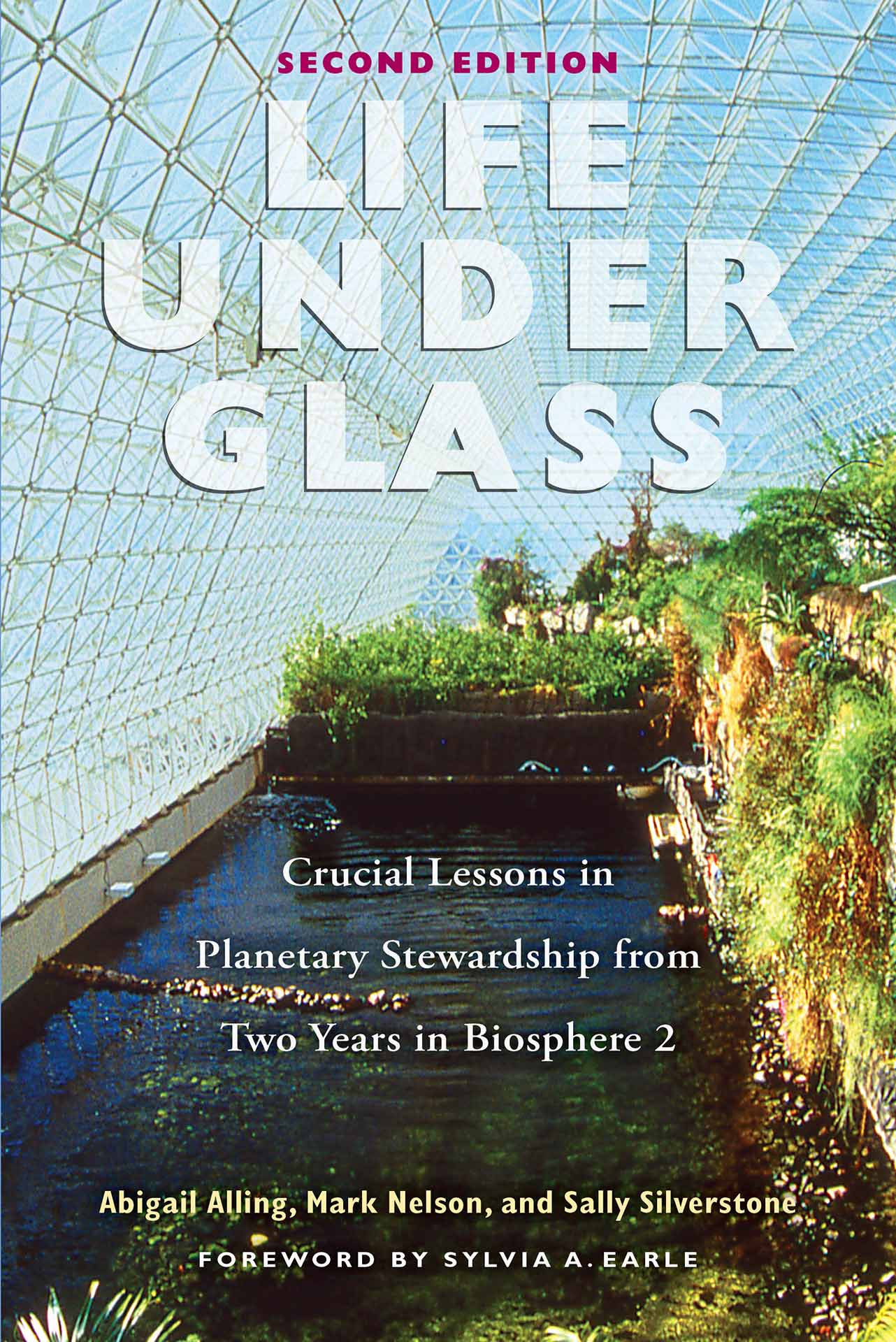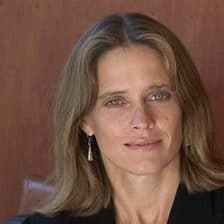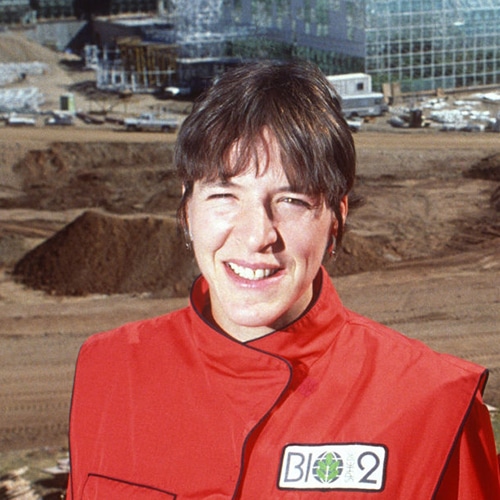Description
Planet in a bottle. Eden revisited. Laboratory under glass. The largest self-sustaining closed ecological system ever made. Biosphere 2 is many things to many people. This is the only account written while the team was enclosed inside Biosphere 2, telling the story of how they lived and worked inside the facility for two years. They recycled their air, water, food, and wastes, setting a world record for time spent in a closed ecological system and learned many valuable lessons about planetary stewardship.
From its half-acre farm to its coral reef to its emerald rainforest—this unique research facility has proven itself a marvel of human engineering and a testament to the human imagination. For two years, four men and four women lived and worked inside the structure, recycling their air, water, food, and wastes, and setting a world record for living in an isolated environment. But what has this giant glass-and-steel greenhouse been to those most intimately involved with it? What has it meant to the first crew who studied and cared for it? What was it like to be sealed inside a giant laboratory for twenty-four months?
In Life Under Glass, crew members, Abigail Alling and Mark Nelson and co-captain Sally Silverstone present the full account of those two remarkable years. From the struggles of growing their own food, to learning how to help sustain their life-giving atmosphere, the general reader, is offered a rare glimpse into how a group of dedicated researchers managed to surprise the world and fulfill their dream. In this updated edition, a new chapter reflects on the legacy of Biosphere 2 and the state of related scientific progress. Other crews will come and go, but no one else will face the risks, the uncertainties, and the challenges that this new breed of explorers did on Biosphere 2’s maiden voyage. Here is the fascinating story of how it all appeared—living under glass.
Endorsements
“Life Under Glass details an extraordinary scientific experiment, one in which a handful of idealistic citizen scientists, at considerable personal risk, volunteered to enter a closed system, Biosphere 2. The audacity of the effort brings to mind that famous quote of Teddy Roosevelt in which he hails not the critics, but those in the arena who strive valiantly, who spend themselves in a worthy cause, and who, if they fail, do so while daring greatly, their faces marred by dust and sweat and blood.”
– Professor Wade Davis, BC Leadership Chair in Cultures and Ecosystems at Risk, University of British Columbia, Vancouver
“Life Under Glass is a massively important and inspirational book about a great experiment that will be regarded as a cornerstone in the human quest to understand the Biosphere and ecology itself. Anyone who wants to understand what innovation actually is must read this book and whisper a hushed vote of thanks that people like this exist!”
– Sir Tim Smit, Founder, Director, The Eden Project, Cornwall
“I am delighted to see a second edition of this important book that tells the true and, frankly, honest account of the Biosphere 2 experiment. It is important that the project has been so fully recorded here in what is also a most enjoyable read.”
– Sir Ghillean Prance FRS, VMH
“Life Under Glass is an honest, first‐hand account of an innovative experiment. Biosphere 2 itself was visionary…the subjective experience in undertaking such an experiment makes enjoyable and inspirational reading for anyone eager to learn about exploring and discovering a new frontier where knowledge, skills, technology, and organization are key in managing self‐organizing systems.”
– Dr. Jose Furtado, Centre for Environmental Policy, Imperial College, University of London
“I have known for five decades these deep, audacious, visionary nomads, walking the waves of the Heraclitus, creating Biosphere 2 to reflect our world, more real than true. Life Under Glass chronicles step‐by‐step a journey worthy of including in the Arabian Nights…braving the vivid unknown!”
– Godfrey Reggio, documentary film director (Koyaanisqatsi, the Qatsi trilogy)
“Life Under Glass is a thrilling account of the daily life in Biosphere 2 and first and foremost a precious testimony on a unique experience that can teach humanity how to live in a small world, act as steward and feel interconnectedness. This book contains the keys to unlock the 21st century.”
– Jean‐Pierre Goux, President of the Institute for Sustainable Futures, author, “The Blue Century,” founder, OneHome
“Life Under Glass is a special present not only for me but for all the people who want to know, from real protagonists, the great history of Biosphere 2. The stories recounted here are extraordinary, beautiful, and dramatic at the same time. A must to read.”
– Antonino Saggio, Professor of Architecture Sapienza University of Rome
“Life Under Glass tells the story of an important experiment which has contributed to the void of neglecting ecological large‐scale issues. These authors are explorers in the very best sense, storytellers at the finest. Life Under Glass hence allows a truly enjoyable read, accompanied by eye‐openers directly from the authors’ hearts.”
– Dr. Ralf Anken, Head of the Department of Gravitational Biology, German Aerospace Center, Cologne
“Life Under Glass is a great illustration of human creativity in extreme environments…the biospherian thinking process was an example of the emergence of a noosphere so that technics, or in my terms: art, science, and technology, reinforces life and life reinforces the arts, sciences, and technics in an evolutionary sustainable way.”
– Roger Malina, ArtScience Research, Director ArtSciLab UTDallas, Executive Editor Leonardo Publications, MIT Press.
“Life Under Glass remains unique: the only first‐hand account of the biospherians as they evolved, individually and as a team, written by three of them while all eight were still enclosed and occupied with their scientific work, daily lives and interpersonal camaraderie and tensions. This second edition, with a new introduction and afterward and further documentation, makes for compelling reading, a special record of a special experience.”
– John Rockwell, author and longtime New York Times dance, music and arts critic
“The Biosphere 2 closure experiment in 1991‐1993 is, to this day, the most successful closed environmental system test ever performed. The Biosphere 2 was created by a group of dedicated private ecology and space enthusiasts who designed, fund raised, built and instrumented the structure, identified and supplied the plants and animals that made up the biome, and then lived for 2 years in their built creation: a fully self sustaining closed environment. The 2 year period was chosen to demonstrate the surface stay of a typical Mars conjunction class mission. The 8 person crew that performed the mission did all the hard work that it took to keep their biome and complex machinery functioning, while suffering from calorie restriction and the associated weight loss, and a slow decline in oxygen concentration in their air supply. None of them were under any obligation to complete the 2 year stay but all of them did. It stands as a testament to human ingenuity and shows that the CAN DO attitude of private space enthusiasts is one of the most powerful forces that can propel humanity to the stars.”
– Dr. Carol R. Stoker, Staff Research Scientist, NASA Ames Research Center, Moffett Field, CA
“Biosphere 2 is a ‘vision’ and Life under Glass is a scientific treat and vicarious experience, beautifully written and amply illustrated with truly unique photographs. Without question Biosphere2 is an architectural masterpiece ‐ an extraordinary engineering feat hidden within an artistically inspiring monument to the future. If Biosphere 2 is the heart, then the biospherians are the soul, giving meaning and purpose to their mission. Dedicated to understanding (and measuring) such a complex system, they struggled through the tedious and yet exciting workaholic days, forced to come up with new and creative ideas to solve seemingly unsolvable problems while documenting their complex biomes’ evolution. See their world and relive their experiences through their eyes ‐ enrich your life and join the biospherian explorers in their two year emotional scientific journey, with all their hardships, challenges and successes, having lived through experiences that we, the readers, can only imagine.”
– Richard M. Satava, MD, PhD(hon), Emeritus Professor of Surgery, University of Washington, Seattle
“The task of recreating some of the most important of Earth’s biomes in Biosphere 2 was a remarkable, exciting and memorable challenge, one which a very dedicated international team accomplished with great success. Today, some of the lessons learned are providing insights into the restoration and preservation of wilderness biomes, regenerative agriculture, and atmospheric management. Perhaps most importantly, Biosphere 2’s story as captured in Life Under Glass, shows in dramatic fashion new roles for humans who recognize their dependence on and responsibility for protecting our living world.”
– Michael J. Balick, PhD, Vice Pres. for Botanical Science & Director, Institute of Economic Botany, NY Botanical Garden
“Life under Glass offers us a unique opportunity to understand how life is interconnected and how we need to live and behave if we want a sustainable planet. This book should be read by everybody in order to understand that we are biological beings and depend on the health of the biosphere. In this book, Mark Nelson, Abigail Alling and Sally Silverstone introduce us to the everyday life of a biospherian and the knowledge and sensitivity we need to be good stewards of Nature.”
– Tiahoga Ruge, environmental film‐maker, Regional Coordinator for Mexico, Earth Day Network




Reviews
There are no reviews yet.